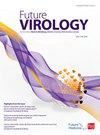伊朗妇女宫颈样本中人乳头瘤病毒16型的谱系和亚系
IF 1.4
4区 医学
Q3 VIROLOGY
引用次数: 0
摘要
目的:本研究旨在分析人乳头瘤病毒16型(HPV16)的型内变异,并评估这些变异发展为癌症的风险。材料与方法:采用聚合酶链式反应直接测序法对58例女性HPV16变异株进行检测。结果:最常见的谱系是D(67.2%),其次是A(32.8%)。A谱系主要出现在正常(62.5%)和宫颈上皮内瘤样病变-1(CIN-1)(83.3%)中,而D谱系是癌症最常见的变体(100%)。结论:本研究揭示了伊朗HPV16变异的独特模式。根据我们的数据,主要的HPV16谱系是D,并且谱系D变异与宫颈癌症之间存在显著关联。本文章由计算机程序翻译,如有差异,请以英文原文为准。
Lineages and sublineages of human papillomavirus type 16 in cervical samples of Iranian women
Aim: This study was designed to analyze intratypic variations of human papillomavirus type 16 (HPV16) and to assess the risk of these variants for progression to cervical cancer. Materials & Methods: HPV16 variants of 58 women were determined by PCR-directed sequencing. Results: The most frequent lineage was D (67.2%) followed by A (32.8%). Lineage A was found predominantly in normal (62.5%) and cervical intraepithelial neoplasia-1 (CIN-1) (83.3%), while lineage D was the most prevalent variant in cervical cancer (100%). Conclusion: The present study revealed a distinct pattern of HPV16 variants in Iran. Based on our data, the predominant HPV16 lineage was D and there was a significant association between lineage D variants and cervical cancer.
求助全文
通过发布文献求助,成功后即可免费获取论文全文。
去求助
来源期刊

Future Virology
医学-病毒学
CiteScore
4.00
自引率
3.20%
发文量
84
审稿时长
6-12 weeks
期刊介绍:
Future Virology is a peer-reviewed journal that delivers essential information in concise, at-a-glance article formats. Key advances in the field are reported and analyzed by international experts, providing an authoritative but accessible forum for this ever-expanding area of research. It is an interdisciplinary forum for all scientists working in the field today.
 求助内容:
求助内容: 应助结果提醒方式:
应助结果提醒方式:


